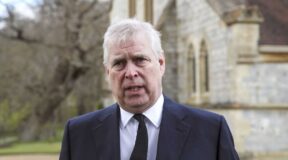(Spoilers for the hit Netflix docuseries Murder Among the Mormons)
Netflix’s Murder Among the Mormons has captured national attention with the gripping twists and turns of the crimes of Mark Hofmann. While the title references the notorious acts that brought Hofmann’s crimes to light, his forgeries may have incredibly far-reaching historical implications.
Hofmann’s forgeries fooled historians, collectors, and museums. Because the forgeries are so difficult to detect, and he also bought and sold real documents as a cover, historians are still struggling to determine which documents out in the world are genuine and which are fakes. While Hofmann has been in prison since 1987, experts believe there may be many of is forgeries still in private collections and even on display as genuine, muddying the waters of history.
A post shared by Claire (@guiltypartypod)
4 Salamander Letter – $40,000
Over the course of his career as a documents dealer and forger Hofmann sold many fake historical artifacts – including forty-eight just to the Church of Jesus Christ of Latter-day Saints – but the best known is the infamous Salamander Letter. It was purchased by Steve Christensen (who donated it to the LDS church) in 1984, who Hofmann would deal tragic consequences to in 1985 as part of the attempted cover-up.
While Hofmann undeniably made a large sum of money on the forgery, he had another agenda with the Salamander Letter – to rewrite Mormon history.
Church doctrine states that in 1823 Joseph Smith was lead to the gold plates that he transcribed into the Book of Mormon by the angel Moroni. The Salamander Letter purports to be written by Martin Harris, Joseph Smith’s scribe, in 1830, and contradicts that version of events. Rather than an angel, it claims that Joseph Smith found the plates by following an old spirit in the form of a white salamander. While some Mormon scholars at the time argued that it was not damaging to Mormon theology because it reflected common folklore at the time or because it might have been forged in the 1800s to hurt the church, the document did change the origin story of the Mormon Church from one with classic Christian symbols to one full of folk magic imagery. It challenged the very roots of the Mormon faith.
Former news anchor Ron Decker has stated that this was always Hofmann’s intention with the Salamander letter. “ He could come up with plausible things that changed the history in ways that reflected badly on Mormon belief and that encouraged Mormons to leave their faith.”
A post shared by Claire (@guiltypartypod)
3 Daniel Boone, Betsy Ross, and other American folk heroes
Although Hofmann is best known for creating false documents relating to the Mormon Church, he created forgeries of historical figures of all kinds, from Mark Twain to George Washington. One of these was Daniel Boone.
Daniel Boone was an American frontiersman who was known for his expeditions through the Appalachian Mountains. Many of the stories of his life are a combination of fact and legend, so it can be difficult to determine the real history. This, and his status as a folk hero, can make historical documents of special interest to collectors.
Mark Hofmann created so many false Daniel Boone documents that expert John Reznikoff warns, “to be very careful when you’re buying a Daniel Boone…I still see them on the market today.”
Hofmann created not only signatures, but entire letters by many famous American figures. One such letter is an imitation of Betsy Ross, the patriotic icon reported to have sewn the first American flag. Experts say that this forgery would be worth hundreds of thousands of dollars, if it were genuine.
These documents were able to fool even expert authenticators. Hofmann heat-aged the documents by placing them in the oven, and even added dirt to some of them to make them seem more authentic. Investigators were only later able to identify Hofmann’s forgeries when they noticed what is known as “alligator ink” under a high-power magnifying glass. The heat that Hofmann used to make the documents look genuine may have caused these minute cracks in the ink.
A post shared by Books in the Wild (@booksinthewildpodcast)
RELATED: 12 Celebs You Didn’t Realize Were Mormons
2 Emily Dickenson Poem – $24,150
The Emily Dickenson poem sold by Mark Hofmann was believed the first new Dickenson to be discovered since 1955, but of course, it was penned by Hofmann himself.
That God cannot be understood/Everyone agrees/We do not know/His motives nor/Comprehend his/Deeds – Then why should I/Seek solace in What I cannot/ Know? /Better to play/ In winter’s sun/Than to fear the/Snow
Hofmann wrote the poem in pencil, matching Dickenson’s handwriting from the time period that the poem was meant to be written (the early 1870s.) It was written on plain, blue-lined paper with an embossed mark that matched that of a company that the poet used. He signed it ‘Emily.’ A blank page attached to the poem had the words, ‘Aunt Emily’ written on it, in a different handwriting. This mysterious historical detail added a level of intrigue to the document that attracted the attention of collectors.
“It’s an extraordinarily good forgery,” Selby Kiffer, a senior vice president at Sotheby’s, said Thursday. “The correct paper for the period, the correct writing instrument for the period, the literary tone was quite good – and the imitation of the writing.”
The poem was purchased for over $24,000 by Dickenson’s hometown library in Amherst through Sotheby’s on June 3rd, using donations to the library and the Emily Dickenson International Society.
1 The Oath of a Freeman – Over $1 Million
The Oath of a Freeman was the first printed paper in the colonies, and documents the Massachusetts Bay Colony’s members pledge to protect the colony. If genuine, it would be of tremendous value. Although he was never able to sell the document, Hofmann was in the process of attempting to sell a document called “The Oath of a Freeman” to the Library of Congress, with a reported asking price of $1.5 million.
READ NEXT: 10 Incredible Misconceptions About Mormons
Sources: The Guardian, Deseret News, Esquire, MovieMaker, University Archives, History, University Press of Kentucky
Source: Read Full Article





